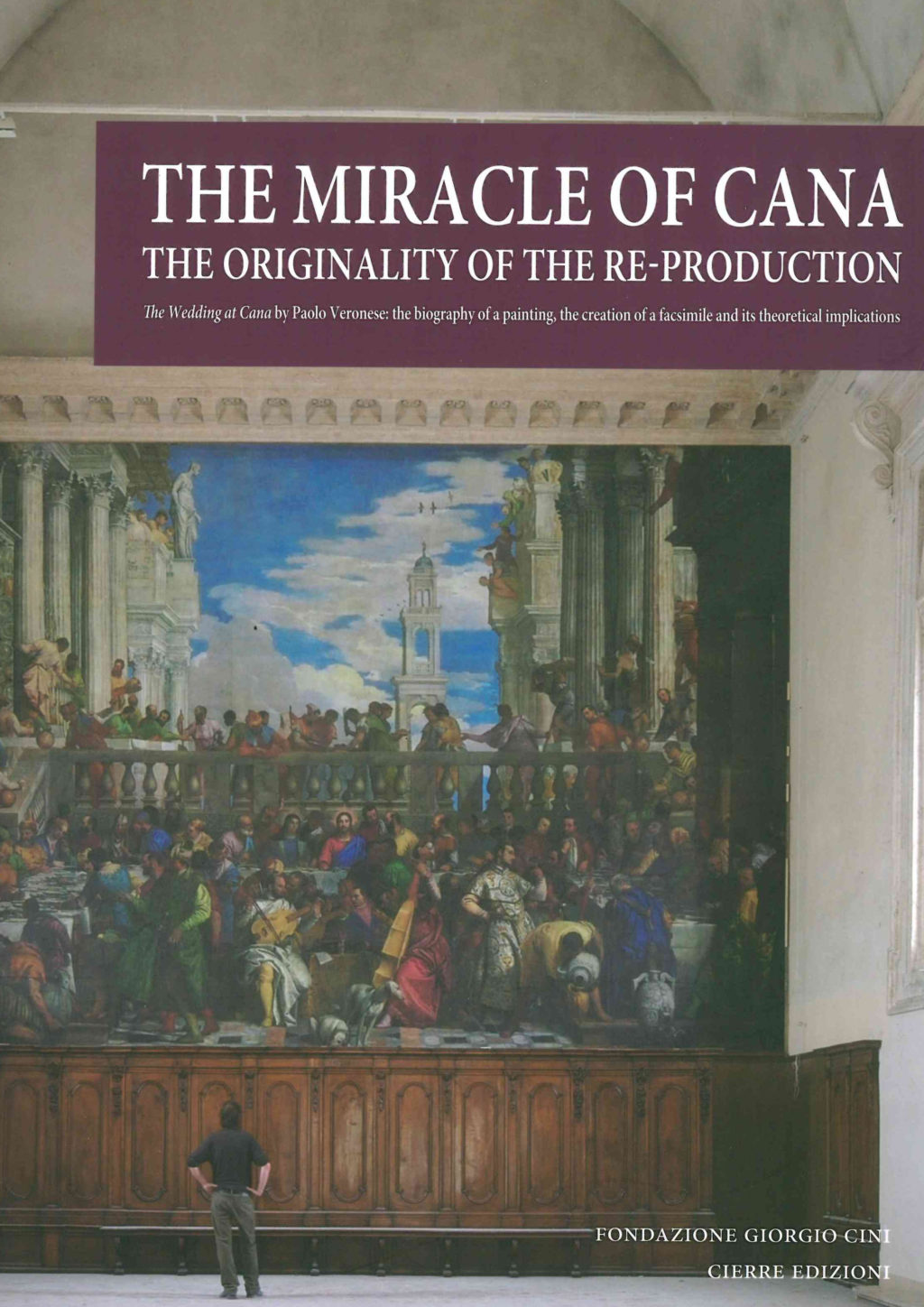The story told by
this book is in fact about a great painting which the monks commissioned from
Paolo Veronese in 1562. The canvas of about 70 square meters filled the entire
rear wall of Palladio’s Refectory, and was conceived as a logical and glorious trompe-l’oeil completion of the architecture. The
enduring chorus of praise and marvel induced Napoleon and the French – who had
occupied Venice – to seize the work in 1797 as war reparations. Until the
arrival of the facsimile, the wall remained blank and this was
indeed an open wound that deconstructed the original atmosphere of the
refectory. On 11 September 2007, exactly 210 years after its removal, the
facsimile was “unveiled’ and the overall work of art consisting of the
architecture and painting was fully reconstructed and could once more be
admired. This book tells the story of this adventure. It contains basically
three sections respectively concerning 1) the biography of the original
painting ; 2) the detailed description of the technical processes through which
the facsimile has been produced ; 3) the critical reflection on the aesthetic
and historical significance of this operation, and the new light it brings on
issues of conservation and restoration. Indeed, as many reflections made in the
third session show, the new perspectives created by the facsimile lead us to
conceive the “aura” in a dynamic way, as something which can “migrate,” from
one place to another, from the original to its “copies.
Publisher: Cierre Edizioni
The miracle of Cana

This book retells the great aesthetic, historical and technological story that began 450 years ago, in 1562, when the Benedictine monks in the monastery of San Giorgio commissioned Paolo Veronese to make a large painting of the Wedding at Cana. When completed, the canvas of about seventy square metres filled the entire rear wall of Palladio’s Refectory, and was conceived as a glorious, logical trompe-l’oeil complement to the architectural setting. The enduring chorus of praise and marvel induced Napoleon and the French – who had occupied Venice – to seize the work in 1797 as war reparations.
For over two centuries, the wall had remained more or less blank, like an open wound that prevented people from experiencing the original atmosphere of the refectory. Then on 11 September 2007, exactly 210 years after the original’s removal, Paolo Veronese’s Wedding at Cana returned home in the form of a perfect facsimile made by Factum Arte, Madrid. At long last the work of art could once more be experienced directly and the overall unity, including the dialogue between architecture and painting, fully appreciated.
The book is divided into three sections: 1) the story of the original painting still in the Musée du Louvre, Paris; 2) a detailed description of the technical processes involved in producing the facsimile; 3) critical reflections in the fields of aesthetics and art history about the significance of the operation and the new light it brings on issues in the conservation and restoration of art works.
As many of the considerations in the third section show, the new perspectives created by the facsimile lead us to conceive the “aura” of a painting in a dynamic way, as something which can effectively “migrate,” from one place to another, from the original to its “copies”. This English version is an updated and enhanced edition of the catalogue Il miracolo di Cana. L’originalità della ri-produzione (2007).